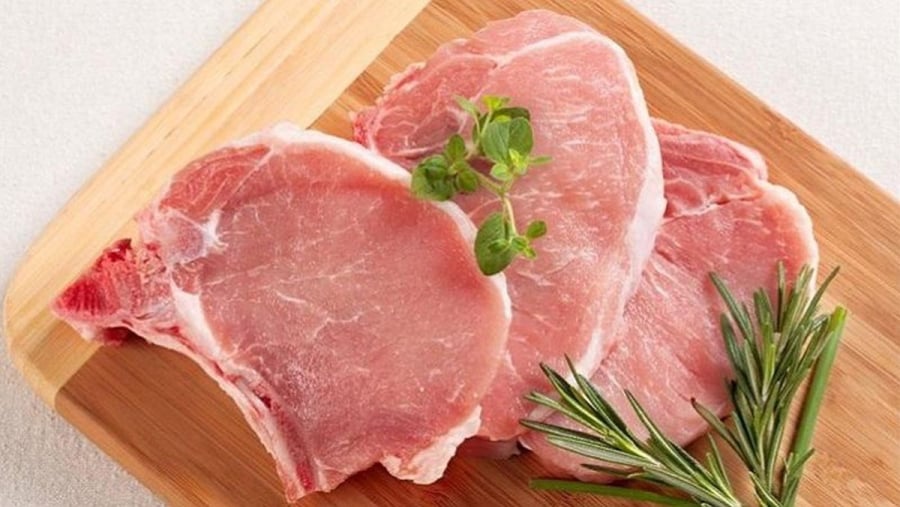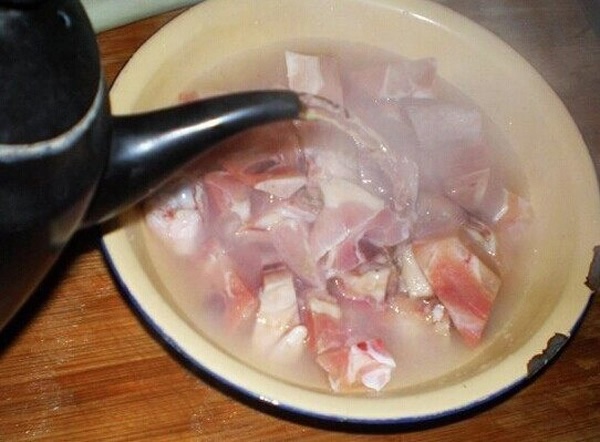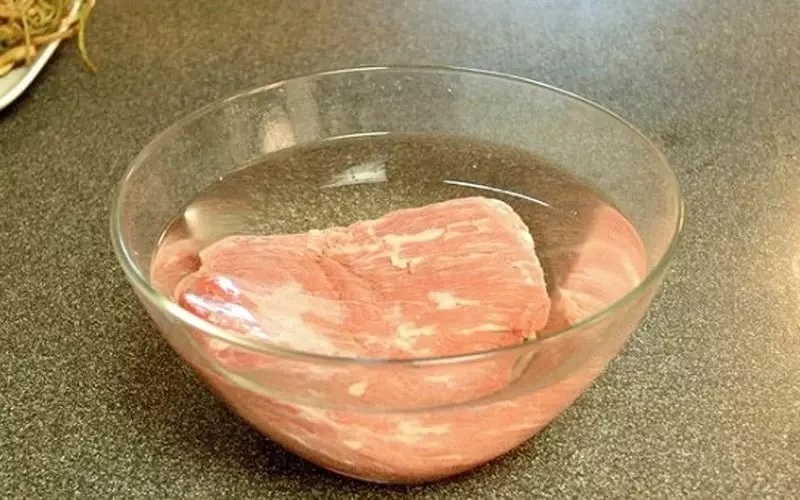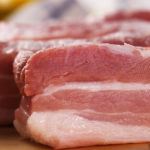Pork is an indispensable part of Vietnamese daily dishes, however not everyone knows how to choose and prepare pork properly. Careful selection and thorough preparation before cooking is essential to ensure the quality and safety of pork, making the dish more appealing.
Guide to selecting fresh and delicious pork
When buying pork, you should observe the color, feel the moisture, and smell the meat to evaluate its freshness. Fresh pork should have a slight pink color, not turning gray or dark red. The meat should be tender and have resilience when pressed lightly, without feeling soggy or unpleasant odor.
For the fat, it should have a creamy white color, avoiding yellowish or overly white fat, as it may be a sign of poor meat quality.

When buying pork, you should observe the color, feel the moisture, and smell the meat.
Methods to remove impurities from pork
Before cooking, pork needs to be processed to remove dirt and impurities. You can rinse the meat under cold water, soak it in a diluted saltwater solution, or use ingredients like ginger or lime to reduce the odor of the meat.
Some consumers have the habit of blanching the meat by dipping it in boiling water to remove bacteria and clean the meat. However, food safety experts affirm that this method is not only ineffective but can also retain toxins in the meat.
When pork is blanched, the proteins in the meat undergo transformation, making the meat shrink and become tougher. This process can cause the meat to retain harmful elements such as chemicals and antibiotics.

When pork is blanched, the proteins in the meat undergo transformation, making the meat shrink and become tougher.
Moreover, blanching is not capable of completely eliminating bacteria, as many types of bacteria require a higher temperature than the boiling point of water. This method also doesn’t remove residues or other additives in the meat. Additionally, this process reduces nutrients such as vitamins and minerals.
To preserve the flavor and ensure the nutrition and safety of the meat, homemakers should seek alternative methods of preparation, such as soaking the meat in a diluted saltwater solution or using natural ingredients with antibacterial properties to clean the meat.
Using diluted saltwater solution to remove impurities from pork
Soaking pork in a diluted saltwater solution is a popular and effective method trusted by many homemakers. This process not only helps clean the surface of the meat but also reduces blood clots and other impurities, while tenderizing the meat and improving its taste without affecting its nutritional value.
Natural salt solution has antibacterial properties to prevent the growth of bacteria during meat preparation. When the meat is soaked in saltwater, the ions in the salt will bond with bacteria and impurities, through the process of osmosis, effectively removing them.

Natural salt solution has antibacterial properties to prevent the growth of bacteria during meat preparation.
Salt also minimizes the level of harmful substances that may remain in the meat due to the rearing process, such as antibiotics or growth stimulants. Using saltwater not only helps eliminate some of these substances but also reduces the risk of bacterial infection when the meat is not thoroughly cooked.
Soaking the meat in saltwater also significantly improves the taste, making the pork tender and more delicious after cooking. This process allows the meat to absorb a moderate amount of salt, balancing the flavor and moisture of the meat, preventing it from becoming dry and tough after preparation.
In conclusion, soaking pork in a diluted saltwater solution not only ensures safety in preparation but also improves the quality and taste of the dish, protecting the health of consumers.
































